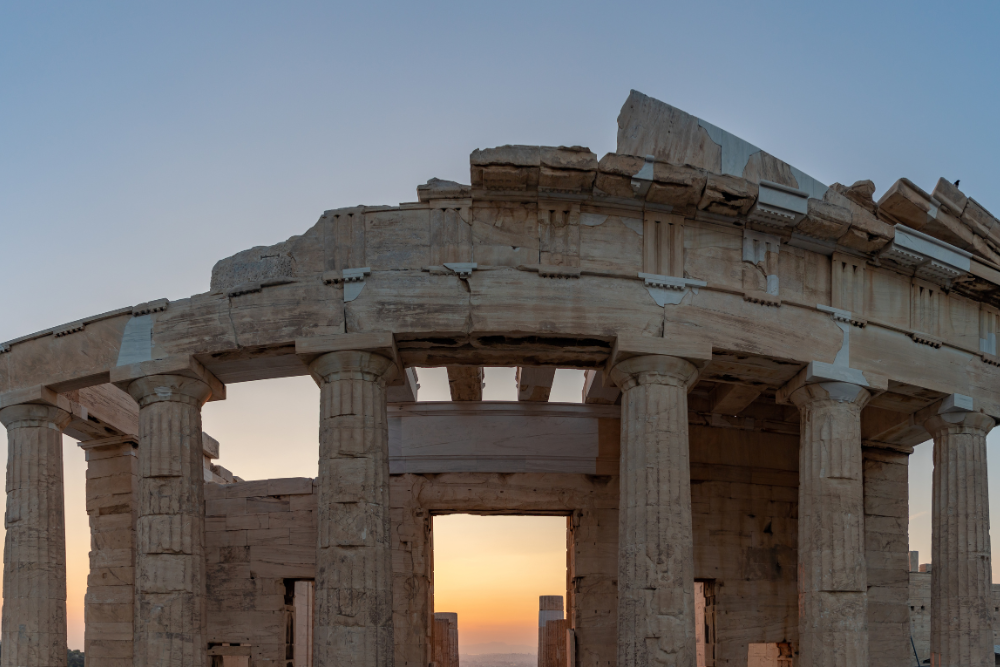The Acropolis of Athens stands as a symbol of ancient Greece’s grandeur, a remarkable testament to human ingenuity and architectural brilliance. A UNESCO World Heritage site, it attracts millions of visitors each year who come to marvel at its history, culture, and breathtaking views. Whether you’re a history enthusiast or a casual traveler, this guide will help you make the most of your visit to one of the world’s most iconic landmarks.
Understanding the History of the Acropolis
The Acropolis, meaning “high city,” has been a focal point of Athens since ancient times. It served as a fortress, a religious center, and a symbol of Athenian power and culture. Its most famous structures were built during the 5th century BCE under the leadership of Pericles during Athens’ Golden Age.
Key highlights of the Acropolis’ history include:
- The Parthenon: Dedicated to Athena, the city’s patron goddess, it is a masterpiece of Doric architecture.
- Erechtheion: Known for its Caryatids—columns sculpted as female figures—this temple honors both Athena and Poseidon.
- Propylaea: The grand entrance to the Acropolis, showcasing monumental architecture.
- Temple of Athena Nike: A small, elegant temple dedicated to Athena as the goddess of victory.
When to Visit
Timing your visit to the Acropolis can make a big difference in your experience.
- Best Time of Year: Spring (April to June) and autumn (September to October) offer pleasant weather and fewer crowds.
- Best Time of Day: Arrive early in the morning (right at opening) or late in the afternoon to avoid peak crowds and midday heat.
- Opening Hours: Generally, the Acropolis is open daily, but hours may vary seasonally. Confirm timings in advance.
Tickets and Entry Information
There are several ticket options available for visiting the Acropolis:
- Standard Entry Ticket: Provides access to the Acropolis and its main monuments.
- Combined Ticket: Grants access to multiple archaeological sites in Athens, including the Ancient Agora, Roman Agora, and Temple of Olympian Zeus.
- Online Booking: Purchase tickets online to skip the lines at the entrance, especially during the busy season.
Highlights to Explore at the Acropolis
- The Parthenon:
As the crown jewel of the Acropolis, the Parthenon is an awe-inspiring structure that embodies the artistic and cultural achievements of ancient Greece. Its massive columns and intricate friezes are a testament to Greek craftsmanship. - Erechtheion and the Caryatids:
This temple’s unique design and the graceful Caryatids—sculptures of maidens serving as supporting columns—make it a standout feature of the site. - The Propylaea:
This grand gateway serves as the entrance to the Acropolis, providing a striking introduction to the ancient site. - The Odeon of Herodes Atticus:
Located at the base of the Acropolis, this ancient amphitheater is still used today for performances, blending history with modern culture. - The Acropolis Museum:
Just a short walk from the site, the museum houses many original artifacts from the Acropolis, including statues and friezes, offering deeper insight into its history.
Tips for Your Visit
- Wear Comfortable Shoes:
The Acropolis involves walking on uneven surfaces and climbing steep paths. Sturdy footwear is essential. - Stay Hydrated:
Bring water, especially if you’re visiting during the summer months. There are limited facilities on-site. - Use a Guide or Audio Tour:
Hiring a guide or downloading an audio tour app can enrich your experience by providing historical context and fascinating stories about the monuments. - Check Accessibility:
The Acropolis has improved accessibility with elevators and ramps, but some areas may still be challenging for those with mobility issues. - Avoid Peak Hours:
Mid-mornings and early afternoons are the busiest. Aim for early or late visits to enjoy a quieter atmosphere.
Photography Tips
- Golden Hour: Visit during sunrise or sunset for the best lighting conditions and fewer crowds.
- Wide Angles: Use a wide-angle lens to capture the grandeur of the structures.
- Respect the Rules: Tripods and drones are not allowed, and certain areas may have restrictions.
Nearby Attractions
Combine your visit to the Acropolis with other notable sites in the vicinity:
- Plaka Neighborhood: Explore this charming area filled with narrow streets, traditional tavernas, and local shops.
- Temple of Olympian Zeus: One of the largest temples of ancient Greece, just a short walk from the Acropolis.
- Ancient Agora: A bustling center of public life in ancient Athens, featuring ruins of marketplaces and temples.
Conclusion
A visit to the Acropolis is more than just a journey through history; it’s an experience that connects you to the roots of Western civilization. From the architectural wonders of the Parthenon to the breathtaking views of Athens, every corner of this ancient site tells a story of cultural brilliance and resilience. Plan your trip wisely, soak in the rich history, and leave with memories that will last a lifetime. The Acropolis isn’t just a destination; it’s a timeless symbol of human achievement waiting to be explored.












